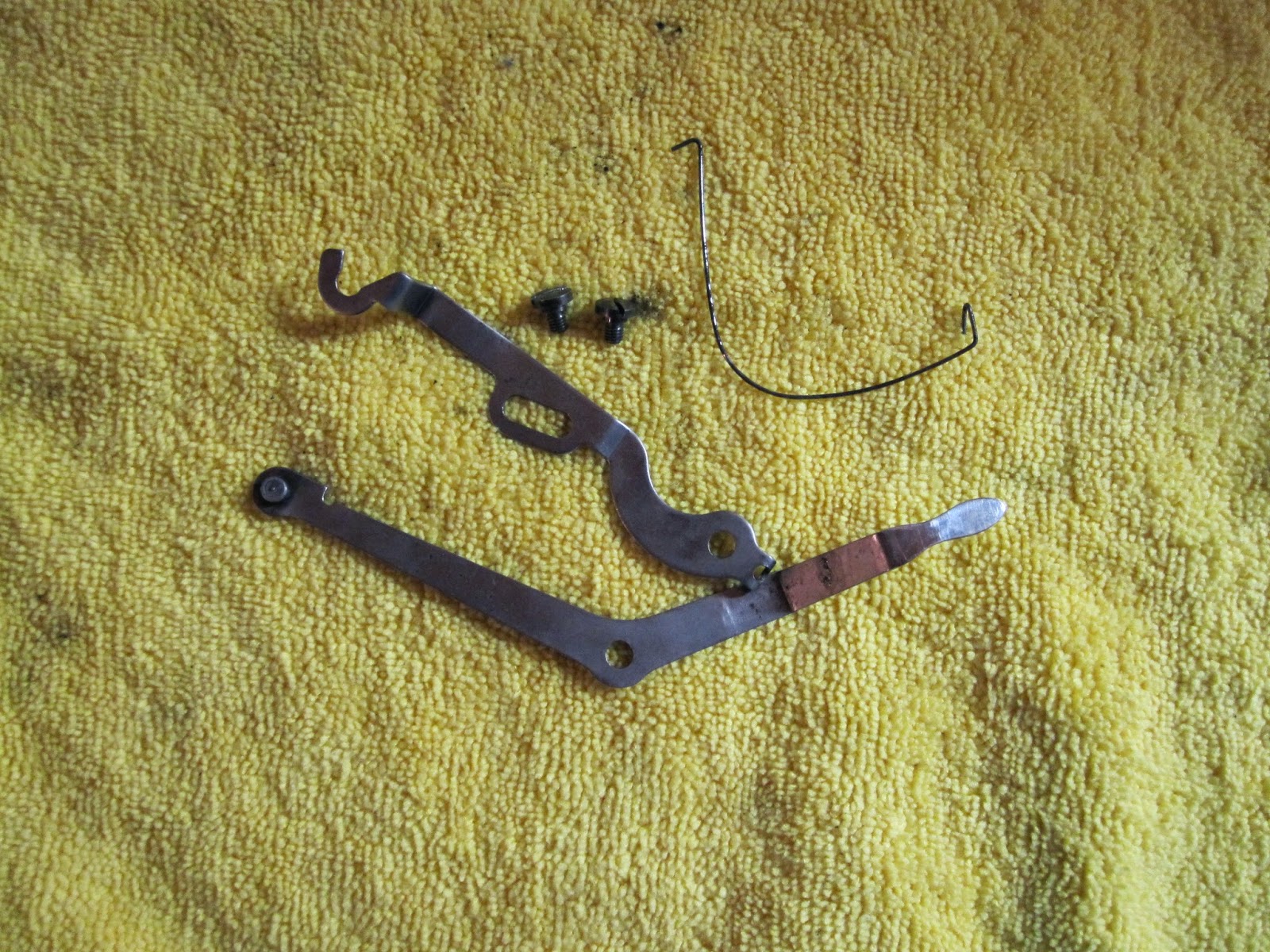Welcome back to another episode of "Do you want to build an Oliver", where the rules are made up and you might just go insane.
Now that the escapement/carriage assembly is completed, we focus on the body again. Due to a broken mainspring, I had to delay attaching the motor which should have been done as the very first step out of everything. Woops. To add it at this stage, simply unscrew the plate holding the typebars in their hanger, seperate the second and third levers, and screw the motor on. You can see its two screws; one between the levers and below the spring plate, and one off to the right just above the foot.
Tidy up again, and its like we did the step correctly.
Your motor is now ready to pull its carriage.
We now add the shifting levers. The same screws that hold the lever hangers down also hold the respective spring plates down.
Here they are attached on the left side.
Repeat for the right side,
and add the springs.
Now we take the assembled carriage/escapement assembly (Anyone got a better name?), and its main hangers.
Take the top screw out from the side, and loosen slightly the lower screw, on each side.
With some careful finagling, the description of which is impossible, we place the assembly into the machine body. I forgot to place the left margin release bit, which you see dangling, in its hole. It is easy to remedy this without taking the assembly back out, and will be detailed later.
In all its glory, the Oliver starts taking shape.
After placing the screws back into the sides of the assembly and tightening the lower ones, we add the main hangers.
The assembly should now be in its fixed position. We now add the top to the roller at the back of the machine.
Zing! Sparkle Sparkle.
Now its time to flip the machine over, and add the shift locks, and automatic reverse.
The shift locks go on loosly first, after which you muscle the ribbon reverse cylinders through their holes. Run the rod through the respective holes, and tighten the shift locks and cylinder screws.
Now we add the ribbon advancement super-plate thing which also acts as an anchor for other things.
Its main screw attaches to the roller-guide, and has a cylinder to allow the proper height. Make sure the small plate, pictured above, is in place with the small indents facing towards the back of the machine.
Now we add the automatic reverse engagements.
You'll slip them in, holding some of the typebars down, through the top plate we added as step 2 or 3 in the first section of this how to. Once they've found their way to position, you'll attach them to the cylinders you had previously left floundering on their own.
Now for the ribbonspool rod.
Before you let it this far down, ensure you have the locking cylinder and grip cylinder (not shown) on the rod. Then you can lower it in place and properly affix said cylinders to their respective locations.
On the underside, we attach the gear to the bottom of the rod.
repeat for the other side.
Its coming together! We now add the shifting mini-rods, which connect the shifting levers (seen above the ribbon plate thingy)
We then screw the screws in, and lock the mini-rods to their position.
Now we add the universal bar.
In its natural rest position, it should lay directly atop the key levers. Screw it in towards the front of the machine. There should be two nuts, one on each side of the machine, on the inside of the screw which are then used to lock the screw in place. Make sure the little clasps are properly opened when placing this piece so they dont get caught incorrectly on the ribbon advancement gear they active.
We now add the spring which forces the universal bar to its rest position.
We connect the universal bar to the reverse T-bar. (Please disregard the two large nuts. There should only be one large nut which actually screws onto the screw shown.)
Here it is attached. The large nut goes between the two pieces, the square inside the t bar itself, and the washer/small nut on the outside to lock the whole thing in place. Ensure it is tight, but not restricting movement of the entire mechanism. Its a bit finicky.
Now we add the lever which stops ribbon movement between spools. Why this is needed, I don't know. But its there to be used regardless.
This may be easier to do earlier, but it posed no true problems getting it in at this stage. Just finagle the lever piece in however you must.
For all intents and purposes, this machine is able to type. One long, long word, due to the absence of the space bar. And it cant shift quite yet. But that aside, a mono-word letter to your friend may be in the works.
Congratulations, your almost there!
Up next, we add the shifting rod (hopefully) and the space-bar, the ribbon-cups, and the left-margin release, and begin the fun process of adjusting the machine!




































Once again: great pictures. This whole series of posts is an excellent resource for Oliver tinkerers.
ReplyDeleteI am noting the tension that you are putting on the large spring under the universal bar. I may make adjustments to mine.
Amazing.
ReplyDeleteThat's a heck of a job you've done there. Well done.
ReplyDelete